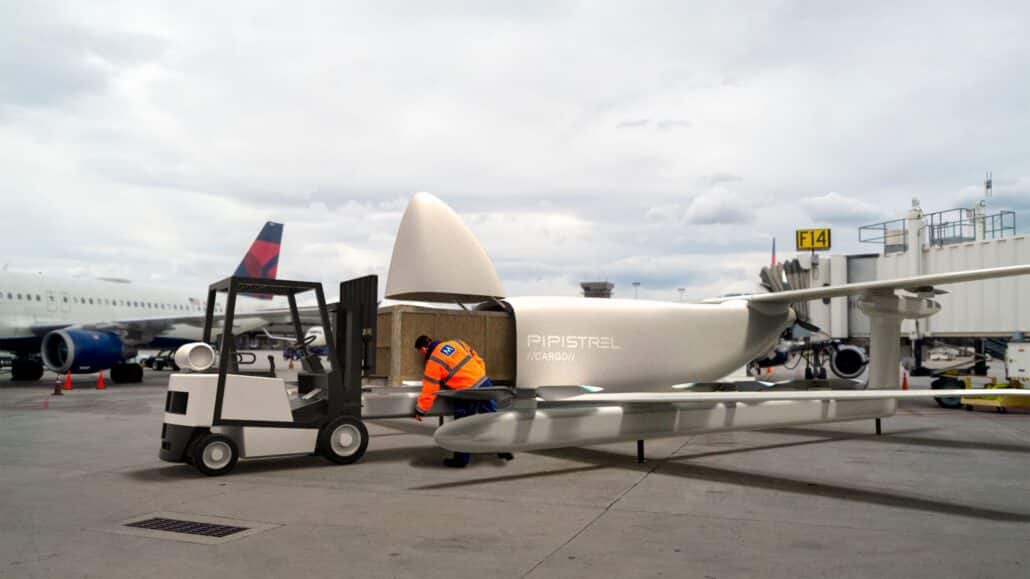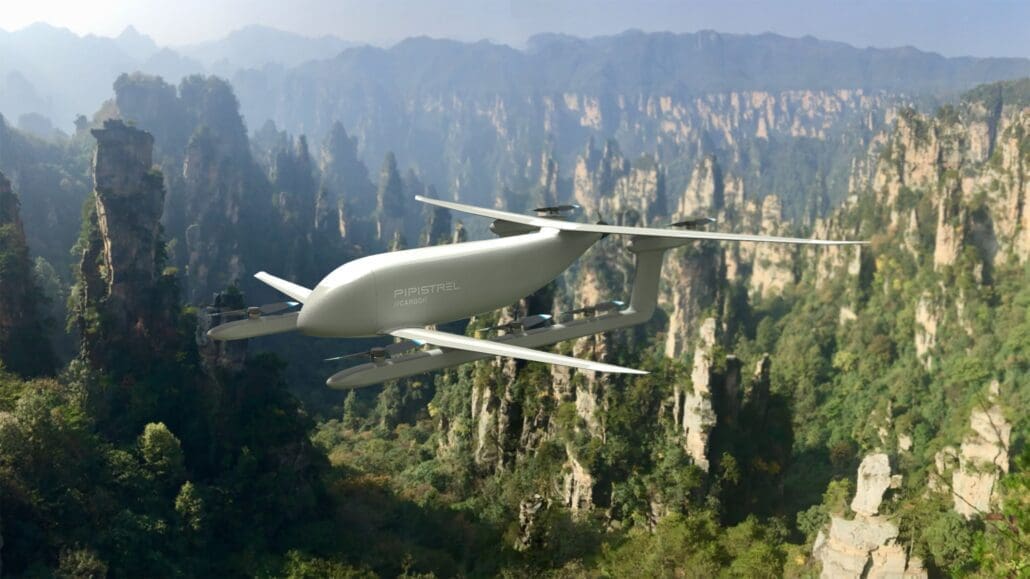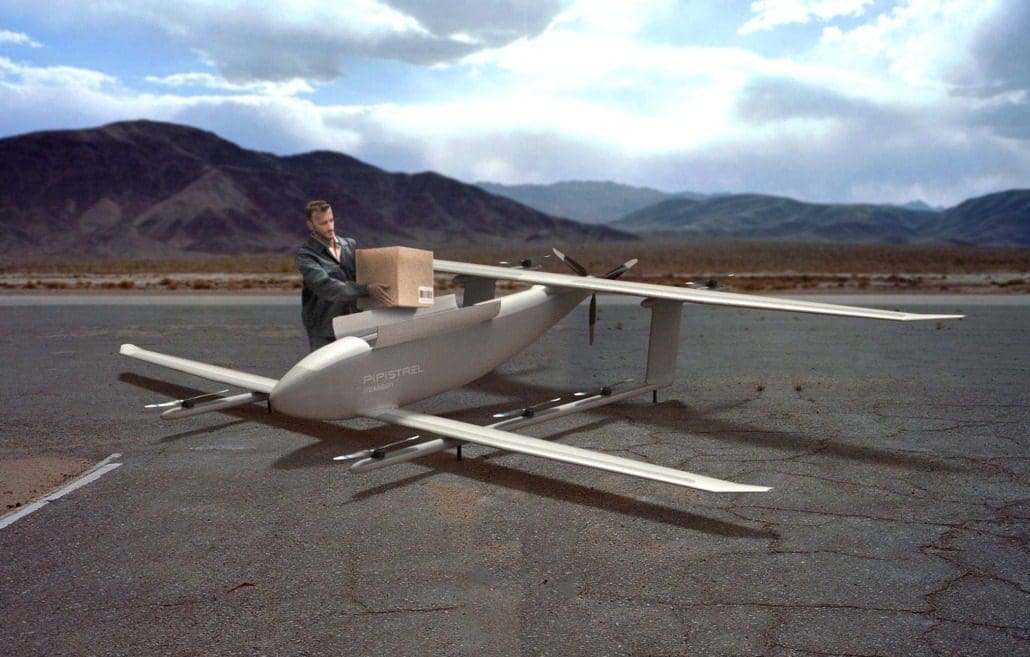Pipistrel Aircraft has announced the Nuuva V300 as the flagship model of a series of unmanned air vehicles (UAV).
“This one‑of‑a‑kind aircraft embodies our vision to disrupt aerial cargo transportation by commercialising the use of electrical vertical take-off and landing (eVTOL) vehicles,” said a spokesperson for the Slovenian company.
“The highly customisable autonomous aircraft can carry up to 460kg, is easy and economical to operate, and offers the efficiency and reliability of electric powertrains. Entry into service is planned for the second half of 2023.”
The Nuuva family combines the best of both aeroplane and helicopter air cargo transportation principles, says Pipistrel. The unmanned eVTOL capability enables it to go where no aeroplane is able to, while its hybrid configuration allows it to operate at a fraction of the cost of a helicopter on an equivalent mission. The Nuuva V300, with its simplicity, efficiency, and autonomy, is targeting to deliver a 10x improvement in economics to the operator.

The large cargo compartment accepts up to three Euro-pallets (EPAL) that can be easily loaded with a regular forklift. The Nuuva V300 then flies a preloaded flight plan fully autonomously, controlled by a highly reliable digital flight control system.
Continuous communication allows the ground operator, who manages the vehicle with a computer system, to have ultimate control in case of changes or cancellation of the flight.
The Nuuva V300 takes-off and lands using eight independent battery-powered Pipistrel E-811 electric engines, already type certified.
The whole system is safeguarded by the integrated health self‑monitoring system that alerts of any potential malfunction even before it occurs, increasing the reliability and safety. Nuuva V300’s batteries can be charged by simply plugging-in to a SkyChargeT by Pipistrel and Green Motion charging station.

A dependable and proven internal combustion engine in the aft fuselage powers the aircraft in cruise flight, offering unbeatable fuel economy and low maintenance costs. A unique tandem-wing configuration with fly-by-wire control surfaces boosts the aerodynamic efficiency and reduces the landing footprint of the vehicle, while assuring a wide centre-of-gravity margin.
The Nuuva V300 can be customised for a wide range of missions. For operators that prioritise longer range, the vehicle’s payload capacity and anti-ice capabilities can be traded-off for more usable fuel, being able to transport 50kg payload for as far as 2,500km. With shorter mission requirements, the payload can be increased to up to 460kg.

The smaller member of the Nuuva family, the V20, shares the same architecture of the larger V300 but is designed as a lightweight cargo courier carrying payloads of up to 20kg. First customers will be able to take deliveries as early as 2021.
